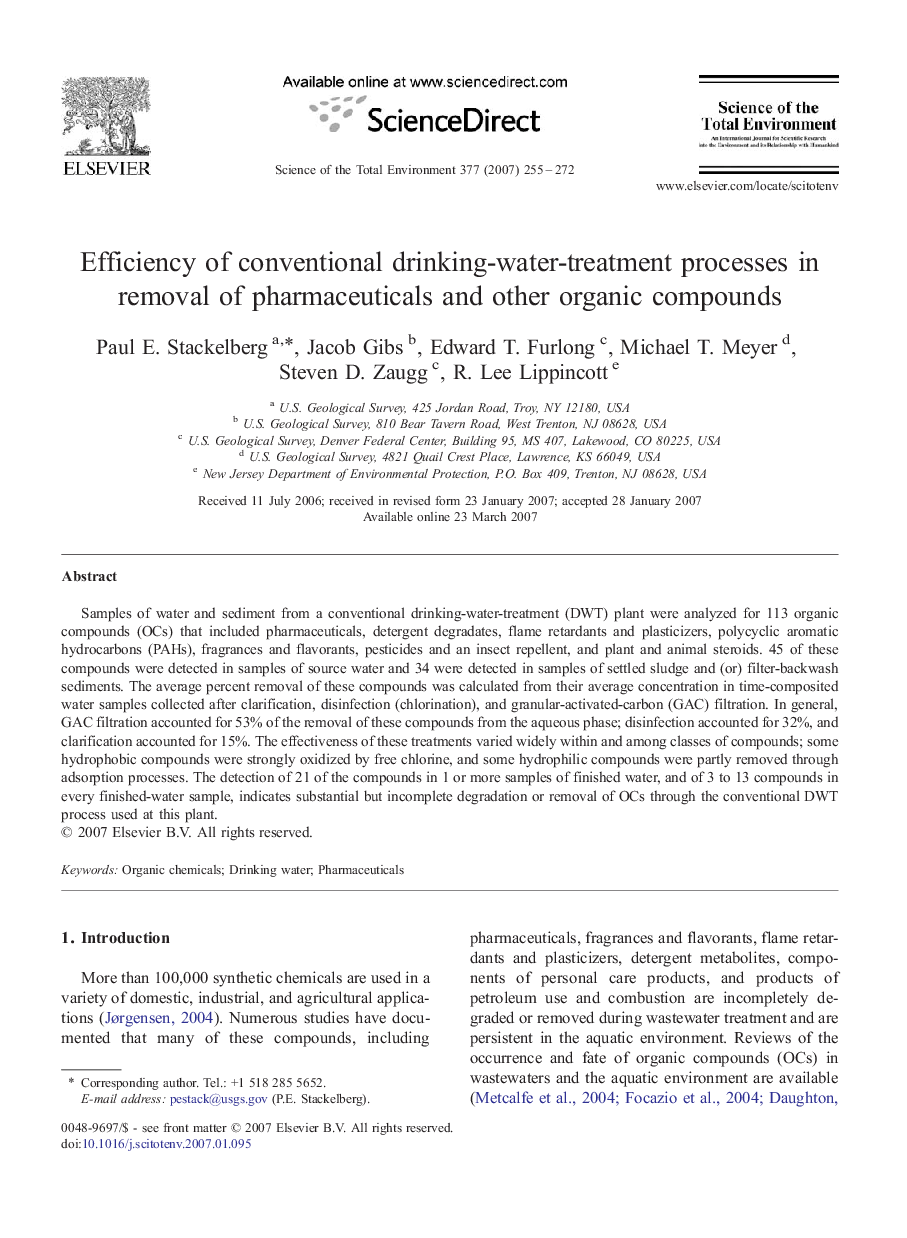| Article ID | Journal | Published Year | Pages | File Type |
|---|---|---|---|---|
| 4433427 | Science of The Total Environment | 2007 | 18 Pages |
Samples of water and sediment from a conventional drinking-water-treatment (DWT) plant were analyzed for 113 organic compounds (OCs) that included pharmaceuticals, detergent degradates, flame retardants and plasticizers, polycyclic aromatic hydrocarbons (PAHs), fragrances and flavorants, pesticides and an insect repellent, and plant and animal steroids. 45 of these compounds were detected in samples of source water and 34 were detected in samples of settled sludge and (or) filter-backwash sediments. The average percent removal of these compounds was calculated from their average concentration in time-composited water samples collected after clarification, disinfection (chlorination), and granular-activated-carbon (GAC) filtration. In general, GAC filtration accounted for 53% of the removal of these compounds from the aqueous phase; disinfection accounted for 32%, and clarification accounted for 15%. The effectiveness of these treatments varied widely within and among classes of compounds; some hydrophobic compounds were strongly oxidized by free chlorine, and some hydrophilic compounds were partly removed through adsorption processes. The detection of 21 of the compounds in 1 or more samples of finished water, and of 3 to 13 compounds in every finished-water sample, indicates substantial but incomplete degradation or removal of OCs through the conventional DWT process used at this plant.
